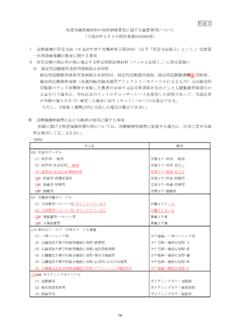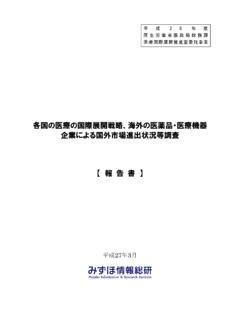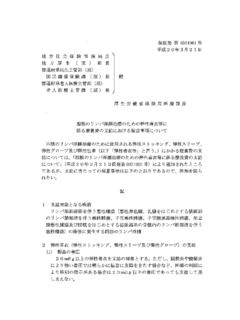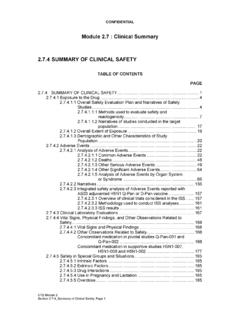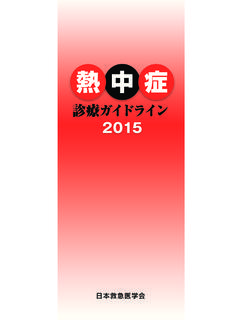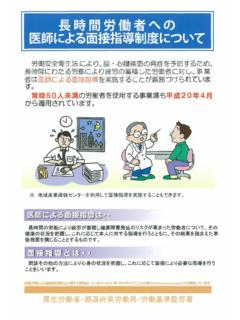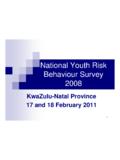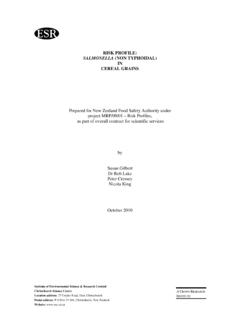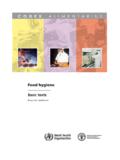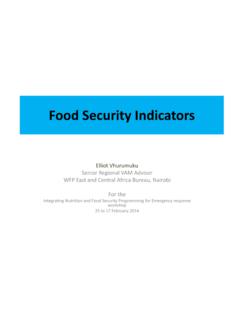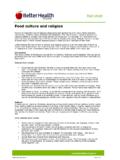Transcription of RECOMMENDED INTERNATIONAL CODE OF PRACTICE …
1 CAC/RCP 1-1969, 2003 Page 1 of 31 RECOMMENDED INTERNATIONAL CODE OF PRACTICE GENERAL PRINCIPLES OF food HYGIENE CAC/RCP 1-1969, Rev. 4-20031 TABLE OF CONTENTS INTRODUCTION .. 3 SECTION I - 3 THE CODEX GENERAL PRINCIPLES OF food HYGIENE:.. 3 SECTION II - SCOPE, USE AND DEFINITION .. 3 3 4 5 SECTION III - PRIMARY 5 ENVIRONMENTAL 6 HYGIENIC PRODUCTION OF food 6 HANDLING, STORAGE AND 6 CLEANING, MAINTENANCE AND PERSONNEL HYGIENE AT PRIMARY 6 SECTION IV - ESTABLISHMENT: DESIGN AND FACILITIES ..7 7 PREMISES AND 8 8 9 SECTION V - CONTROL OF OPERATION .. 11 CONTROL OF food 11 KEY ASPECTS OF HYGIENE CONTROL 11 INCOMING MATERIAL 13 13 13 MANAGEMENT AND 13 DOCUMENTATION AND 14 RECALL 14 SECTION VI - ESTABLISHMENT: MAINTENANCE AND SANITATION .. 14 MAINTENANCE AND 14 CLEANING 15 PEST CONTROL 15 WASTE 16 MONITORING SECTION VII - ESTABLISHMENT: PERSONAL HYGIENE.
2 16 HEALTH 17 ILLNESS AND 17 PERSONAL 17 PERSONAL 17 18 1 The current version of the RECOMMENDED INTERNATIONAL Code of PRACTICE -General Principles of food Hygiene including Annex on Hazard Analysis and Critical Control Point (HACCP) System and Guidelines for its Application was adopted by the Codex Alimentarius Commission in 1997. Amendments regarding rinsing adopted in 1999. HACCP Guidelines were revised in 2003. The Code has been sent to all Member Nations and Associate Members of FAO and WHO as an advisory text, and it is for individual governments to decide what use they wish to make of the Guidelines. CAC/RCP 1-1969, 2003 Page 2 of 31 SECTION VIII - TRANSPORTATION .. 18 18 18 USE AND 18 SECTION IX - PRODUCT INFORMATION AND CONSUMER 19 LOT 19 PRODUCT 19 19 CONSUMER 19 SECTION X - TRAINING .. 20 AWARENESS AND 20 TRAINING 20 INSTRUCTION AND 20 REFRESHER 20 HAZARD ANALYSIS AND CRITICAL CONTROL POINT (HACCP) SYSTEM AND GUIDELINES FOR ITS APPLICATION.
3 21 21 DEFINITIONS .. 21 PRINCIPLES OF THE HACCP 22 GUIDELINES FOR THE APPLICATION OF THE HACCP SYSTEM .. 24 INTRODUCTION .. 24 APPLICATION .. 24 TRAINING .. 28 CAC/RCP 1-1969, 2003 Page 3 of 31 INTRODUCTION People have the right to expect the food they eat to be safe and suitable for consumption . Foodborne illness and foodborne injury are at best unpleasant; at worst, they can be fatal. But there are also other consequences. Outbreaks of foodborne illness can damage trade and tourism, and lead to loss of earnings, unemployment and litigation. food spoilage is wasteful, costly and can adversely affect trade and consumer confidence. INTERNATIONAL food trade, and foreign travel, are increasing, bringing important social and economic benefits. But this also makes the spread of illness around the world easier. Eating habits too, have undergone major change in many countries over the last two decades and new food production, preparation and distribution techniques have developed to reflect this.
4 Effective hygiene control, therefore, is vital to avoid the adverse human health and economic consequences of foodborne illness, foodborne injury, and food spoilage. Everyone, including farmers and growers, manufacturers and processors, food handlers and consumers, has a responsibility to assure that food is safe and suitable for consumption . These General Principles lay a firm foundation for ensuring food hygiene and should be used in conjunction with each specific code of hygienic PRACTICE , where appropriate, and the guidelines on microbiological criteria. The document follows the food chain from primary production through to final consumption , highlighting the key hygiene controls at each stage. It recommends a HACCP-based approach wherever possible to enhance food safety as described in Hazard Analysis and Critical Control Point (HACCP) System and Guidelines for its Application (Annex).
5 The controls described in this General Principles document are internationally recognized as essential to ensure the safety and suitability of food for consumption . The General Principles are commended to Governments, industry (including individual primary producers, manufacturers, processors, food service operators and retailers) and consumers alike. SECTION I - OBJECTIVES THE CODEX GENERAL PRINCIPLES OF food HYGIENE: identify the essential principles of food hygiene applicable throughout the food chain (including primary production through to the final consumer), to achieve the goal of ensuring that food is safe and suitable for human consumption ; recommend a HACCP-based approach as a means to enhance food safety; indicate how to implement those principles; and provide a guidance for specific codes which may be needed for - sectors of the food chain; processes; or commodities; to amplify the hygiene requirements specific to those areas.
6 SECTION II - SCOPE, USE AND DEFINITION SCOPE The food chain This document follows the food chain from primary production to the final consumer, setting out the necessary hygiene conditions for producing food which is safe and suitable for consumption . The document provides a base-line structure for other, more specific, codes applicable to particular sectors. Such specific codes and guidelines should be read in conjunction with this CAC/RCP 1-1969, 2003 Page 4 of 31 document and Hazard Analysis and Critical Control Point (HACCP) System and Guidelines for its Application (Annex). Roles of Governments, industry, and consumers Governments can consider the contents of this document and decide how best they should encourage the implementation of these general principles to: protect consumers adequately from illness or injury caused by food ; policies need to consider the vulnerability of the population, or of different groups within the population; provide assurance that food is suitable for human consumption ; maintain confidence in internationally traded food ; and provide health education programmes which effectively communicate the principles of food hygiene to industry and consumers.
7 Industry should apply the hygienic practices set out in this document to: provide food which is safe and suitable for consumption ; ensure that consumers have clear and easily-understood information, by way of labelling and other appropriate means, to enable them to protect their food from contamination and growth/survival of foodborne pathogens by storing, handling and preparing it correctly; and maintain confidence in internationally traded food . Consumers should recognize their role by following relevant instructions and applying appropriate food hygiene measures. USE Each section in this document states both the objectives to be achieved and the rationale behind those objectives in terms of the safety and suitability of food . Section III covers primary production and associated procedures. Although hygiene practices may differ considerably for the various food commodities and specific codes should be applied where appropriate, some general guidance is given in this section.
8 Sections IV to X set down the general hygiene principles which apply throughout the food chain to the point of sale. Section IX also covers consumer information, recognizing the important role played by consumers in maintaining the safety and suitability of food . There will inevitably be situations where some of the specific requirements contained in this document are not applicable. The fundamental question in every case is what is necessary and appropriate on the grounds of the safety and suitability of food for consumption ? The text indicates where such questions are likely to arise by using the phrases where necessary and where appropriate . In PRACTICE , this means that, although the requirement is generally appropriate and reasonable, there will nevertheless be some situations where it is neither necessary nor appropriate on the grounds of food safety and suitability.
9 In deciding whether a requirement is necessary or appropriate, an assessment of the risk should be made, preferably within the framework of the HACCP approach. This approach allows the requirements in this document to be flexibly and sensibly applied with a proper regard for the overall objectives of producing food which is safe and suitable for consumption . In so doing it takes into account the CAC/RCP 1-1969, 2003 Page 5 of 31 wide diversity of activities and varying degrees of risk involved in producing food . Additional guidance is available in specific food codes. DEFINITIONS For the purpose of this Code, the following expressions have the meaning stated: Cleaning - the removal of soil, food residue, dirt, grease or other objectionable matter. Contaminant - any biological or chemical agent, foreign matter, or other substances not intentionally added to food which may compromise food safety or suitability.
10 Contamination - the introduction or occurrence of a contaminant in food or food environment. Disinfection - the reduction, by means of chemical agents and/or physical methods, of the number of micro-organisms in the environment, to a level that does not compromise food safety or suitability. Establishment - any building or area in which food is handled and the surroundings under the control of the same management. food hygiene - all conditions and measures necessary to ensure the safety and suitability of food at all stages of the food chain. Hazard - a biological, chemical or physical agent in, or condition of, food with the potential to cause an adverse health effect. HACCP - a system which identifies, evaluates, and controls hazards which are significant for food safety. food handler - any person who directly handles packaged or unpackaged food , food equipment and utensils, or food contact surfaces and is therefore expected to comply with food hygiene requirements food safety - assurance that food will not cause harm to the consumer when it is prepared and/or eaten according to its intended use.
